Experts Claim You've Been Drinking Vodka All Wrong This Entire Time
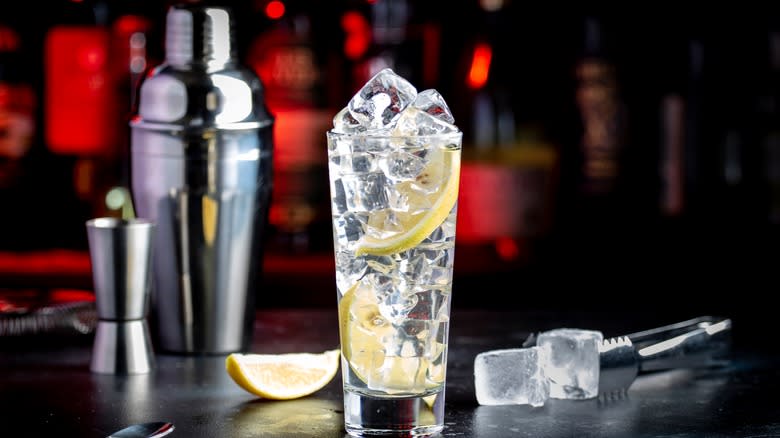
Despite its humble Eastern European origin, vodka is the best-selling spirit in the U.S. and one of the most popular alcoholic drinks globally. The popularity is not surprising; it is easy to make and can be distilled from virtually anything, which means production is accessible and not region-specific. The final product is a crystal clear and pristine spirit without intrusive flavors and aromas, which most people prefer. As a bonus, its uncomplicated character makes this clear spirit the ideal addition to cocktails and mixed drinks.
Regardless of how much we like to drink vodka, we still haven't figured out the best way to taste and experience this legendary spirit, and it seems we've made many mistakes along the way. That's why we got a few expert opinions to point out the problems and define the best ways to get the most out of it. We talked to Thomas Gibson, president of Blue Ice Vodka, Tina Karras, owner and founder of Tina's Vodka, and Leah van Deventer, a WSET Spirits Educator and spirits professional. All three experts discussed the mistakes we're making when consuming vodka and offered valuable advice on the best vodka-drinking practices.
Read more: Popular Vodka Brands Ranked From Worst To Best
Don't Just Stick With Familiar And Famous Brands
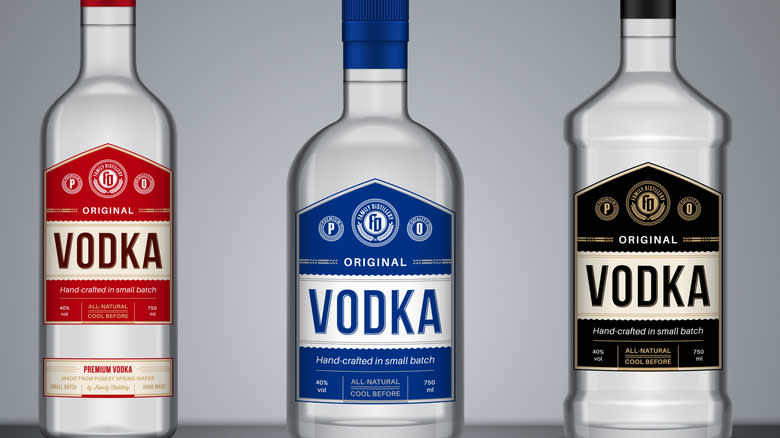
As one of the most consumed spirits in the world, it's surprising that some facts about vodka are still not familiar or communicated, leading to common misconceptions, such as the popular myth that it's only made from potatoes. Similarly, Gibson claims the biggest mistake people make is overlooking the amazing variety of high-quality vodka brands.
"Most people who consume vodka don't have a deep understanding of the different brands, and what makes them different from each other," explains Gibson. He believes that the approach of buying brands you're familiar with or labels you've seen other people purchase is preventing you from exploring the variety on the market. More importantly, this method means you're missing out on the high-quality offerings that get overshadowed by big names.
If you don't know where to start or you come across a tempting label you're not familiar with, Karras suggests an easy solution to get the full picture: "Since we all have smart phones now, I would do a quick search online for reviews, the website and the story behind the brand, and what the brand does to give back to the environment."
Read The Back Label
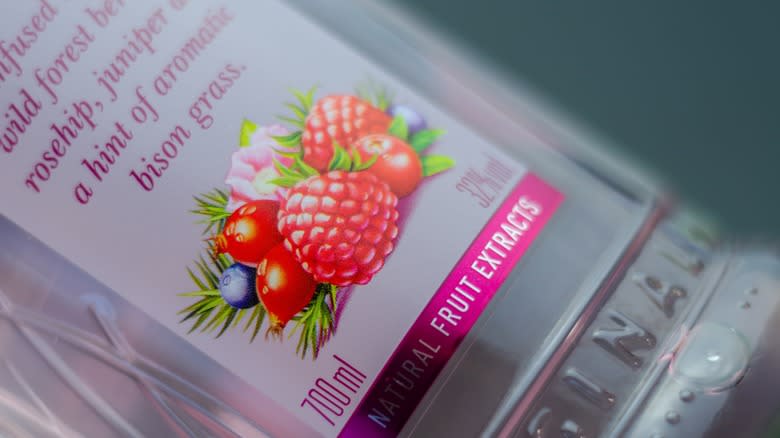
When choosing which vodka bottle to purchase, our experts suggest reading the back label. Gibson claims the back label and ingredient list can tell you much more about the spirit than the brand name and logo. He looks for potatoes in the ingredient list, explaining, "potatoes, when made well, give vodka a smooth, velvety texture." He mentions that cheaper versions might use corn as the base which makes for a sweeter product, while wheat is a good option if you're looking for a bready quality.
Karras agrees and suggests, "if there isn't [an ingredient list], look for things like Organic or non-GMO." If possible, she also recommends pouring a few drops on your hands. If it leaves a sticky film, it means there is probably syrup, sugar, or another additive in the mix.
Van Deventer claims the worst mistake people make when drinking vodka is thinking "it's the 'cleanest' or 'healthiest' liquor available." She emphasizes that in the U.S., sugar and citric acid can be added post distillation. Avoid nasty surprises by taking the time to check the back label to get a rough idea of what's in the bottle.
Chill Your Vodka Properly
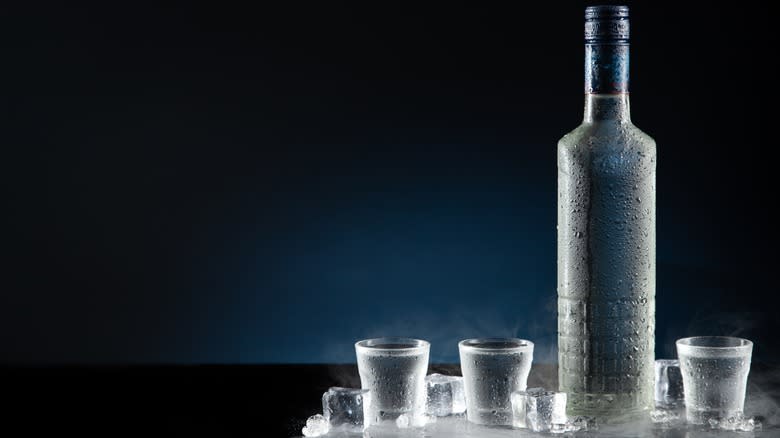
Chilling vodka in the freezer has become something of a standard, so an ice-cold glass is ready any time you want. As it turns out, the practice is not generally recommended. As this is a high-proof spirit with 40% ABV, it won't freeze in a standard home freezer, but the cold temperature will affect its texture and alter the taste and aroma.
"Vodka should be kept in the refrigerator and served around 35 degrees, not the freezer," argues Gibson. He claims that serving it straight from the freezer kills all its character. This is especially troublesome if you have a nuanced version with subtle characteristics that you want to come through on the nose and on the palate. For more generic expressions, using the freezer method should not be particularly problematic.
Gibson also offers a solution for room-temperature vodka, suggesting a quick shake over ice to chill it and bring it to the right drinking temperature.
Don't Assume Price Is Always A Good Indicator Of Quality
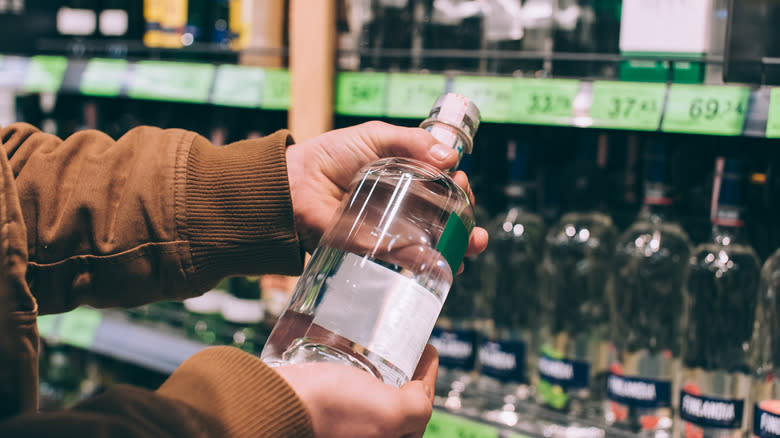
Price is a common factor when choosing which vodka to purchase. Though it carries some weight, your decision should never be made solely on the price as it's not a consistent indication of quality.
Gibson is unambiguous, claiming that "Price doesn't matter -- price is based on marketing budgets!" Some brands want to project a specific image that relates to luxury, which can include exclusive collaborations that justify the high price. This means an expensive label does not guarantee quality, nor does an affordable bottle necessarily mean you're going to get a throat-burning spirit.
Also, make sure not to fall for some common marketing labels declaring the number of times the spirit has been distilled or highlighting words such as premium or limited edition that might want to justify the price. Use research tools to get to know other brands, read the back labels, and perhaps only then consider the price and whether it fits your budget.
Don't Chug It Too Fast Without Enjoying The Drinking Process
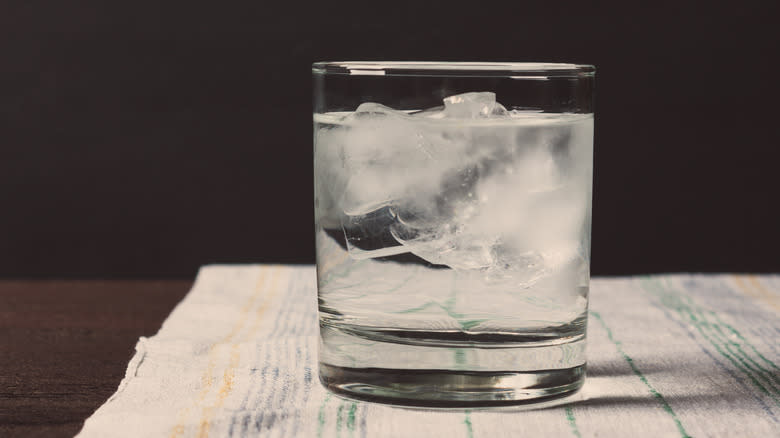
There are many good ways to drink vodka, but chugging it down too fast to appreciate its qualities is one to avoid. Karras is on board with this statement and claims the biggest mistake we make when drinking vodka is "Shooting it and drinking it too fast." Instead, enjoy the process and the drink without the unnecessary rush.
Ideally, don't serve this potent spirit in short and narrow shot glasses. Opt for a wide-rim glassware or a tumbler that will allow more aromas to come through. Before going straight to drinking, Van Deventer recommends to "smell the spirit with short sniffs." When you're ready to taste it, hold and swirl the drink in your mouth for a couple of seconds. This method will allow your palate to uncover all the nuanced flavors. Van Deventer explains, "While both the aroma and flavor should be fairly neutral, there are characterful vodkas, where the raw material may come through, or the texture may be pronounced."
When serving vodka, you should also reconsider how much liquid to pour in the glass. We often see it filled to the brim, but if you want to be more sophisticated and not seem like an overzealous college kid, stick to filling the glass halfway.
Avoid Overpowering Or Low-Quality Garnishes
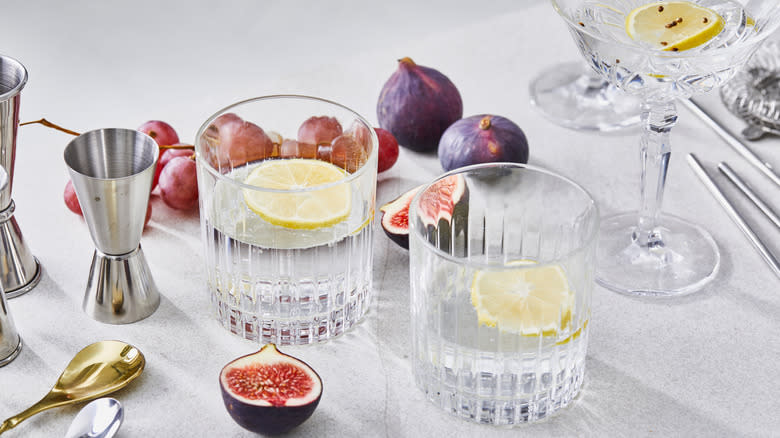
Whether you're serving your vodka neat or in a cocktail, garnishes are always welcome, but don't make the mistake of smothering the spirit with robust and powerful add-ons or using low-quality options that will change its whole character.
Pair your vodka with garnishes that will accentuate its subtle flavor and aroma. Van Deventer recommends lemon as a suitable partner and adds, "lime and cucumber work well too." Most citrus fruits goes well with it, whether you want to add a wheel, wedge, or just the rind, as they impart a lot of freshness. Cucumber has the same qualities, but it also creates a subtle herbal background that matches well with vodka. Fresh fruit such as berries or more subtle herbs would also be good options, but avoid sugar-coated rims or smoky notes that would clash with its clean character.
Karras also mentions that using low-quality garnishes is another common problem, especially when choosing olives for a classic martini. She mentions that many producers pack olives with chemicals and that it's best to avoid these altogether. "Many actually leave a chemical film floating in the drink. Look for organic and non-GMO olives that have only one or two ingredients like olives and salt brine," she recommends. Remember that neutral spirits can't mask faults, so make sure only to pair vodka with top-notch garnishes.
Add Ice And Water To Your Vodka
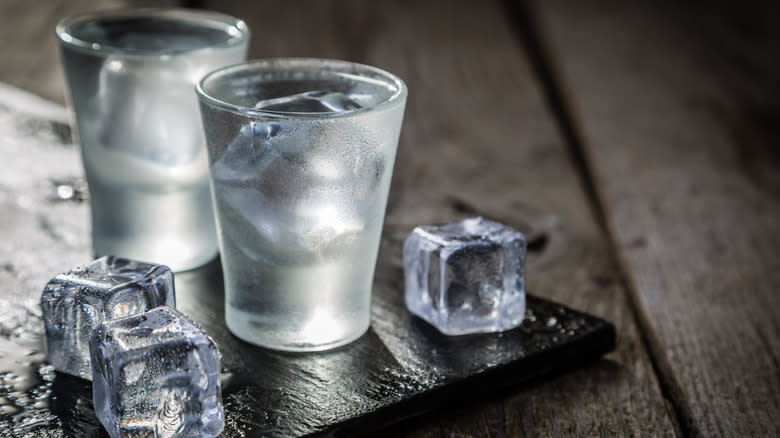
The best way to taste vodka to determine its aroma, flavor, and quality is to serve it neat, but our experts suggest adding ice or a splash of water for an upgraded experience. This is not an unusual practice, especially for spirits packed with complex aromas. For vodka, it may not yet be thoroughly adopted, but it's high time we rethink our habits and add a splash of water or ice cubes.
Karras and Gibson advocate the idea of serving it on the rocks. Gibson argues it's the best way to judge the quality of the spirit, while Karras claims that "tasting a vodka with one ice cube is the best." Van Deventer is a fan of adding water to the glass, and claims it will "reduce the proof and make the flavors easier to identify." For a bubbly alternative, she also suggests pairing the drink with soda water, ice, and a slice of lemon.
When mixing vodka with ice or water, you should think about their quality too. The liquor will only highlight the other flavors, so make sure you don't use old ice that has soaked freezer aromas or anything other than high-quality water.
Incorporate Vodka Into Cocktails
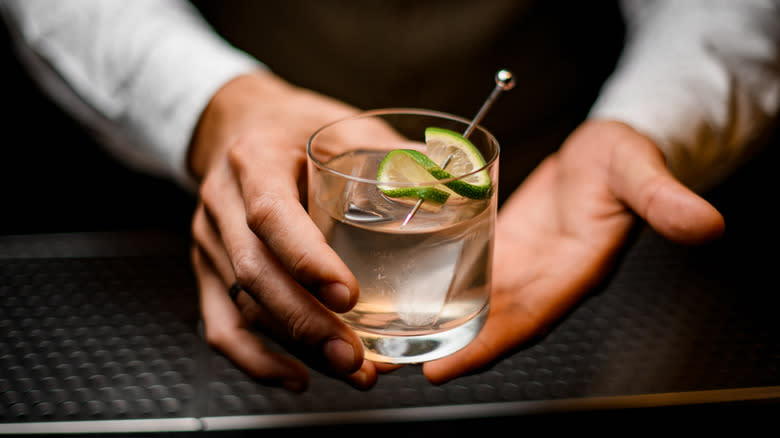
In Eastern European tradition, vodka originated as a spirit intended for drinking neat and was traditionally only paired with some light snacks on the side. Only in the mid-20th century did mixologists start prominently using it as a cocktail ingredient. Still, it took a long time for vodka to build its reputation as it was considered too subtle and neutral to create complex drinks, and bartenders often ignored the whole spectrum of varieties and brands that could showcase different qualities. Now we know that this strong spirit is a must for any reputable bar and that it makes some of the best cocktails in the world.
Because it is so subtle, vodka provides a perfect base to play with different flavors. Van Deventer explains that a good vodka cocktail will depend on the other ingredients that are added to the mix. "Some of my preferred vodka cocktails are a Vodka Martini, White Russian, Lemon Drop and Espresso Martini," she states. Some other must-tries are the legendary Bloody Mary or a zesty Moscow Mule that pairs it with ginger beer. Cosmopolitans, Mudslides, and Greyhounds are other classics worth exploring, proving the spirit does not have to dominate. Rather, it can act as the perfect partner to amp up other ingredients and create balanced and enjoyable cocktails.
Don't Mix Good Quality Vodka With Cheap Mixers

Using vodka in cocktails and mixed drinks is highly encouraged, but our experts warn about combining skillfully crafted bottles with cheap, sugar-laden, subpar mixers, as the neutral liquor can't mask bad flavors. Additionally, these mixers tend to be too powerful, completely smothering the vodka's taste and failing to allow its sharp and clean profile to come through.
Karras believes that combining vodka with low-quality mixers is one of the most common mistakes people make when adding the spirit to cocktails. She explains that she opts for non-GMO ingredients, real cane sugar, and mixers without any suspicious ingredients. "What's the point of a spirit being clean if your mixers are dirty?" asks Karras.
Gibson feels the same way about sugary mixers. He claims that sugar-packed elements will take over the whole drink. Worse, he notes that sugar is one of the culprits for the headache that usually appears the day after sipping a colorful vodka-based drink.
Pair Your Vodka With Food
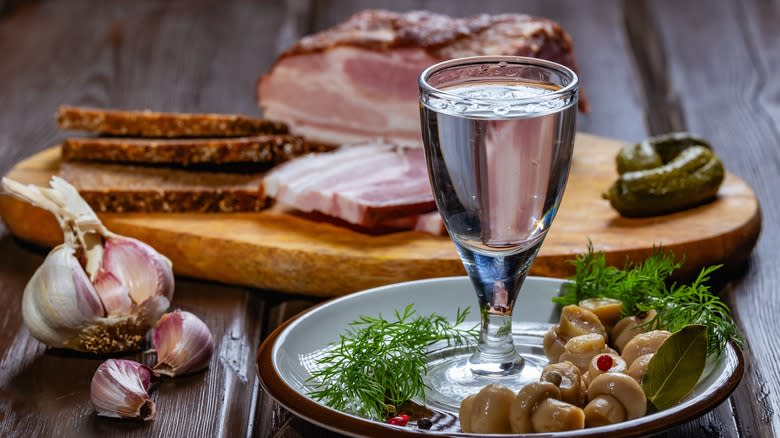
During the global vodka expansion, the tradition of serving the liquor with some nibbles on the side was somehow lost, but it's high time we go back to the roots and start thinking of it as a worthy food companion. Traditionally, this regional spirit was served with zakuski, which could be translated as Russian tapas, as it incorporates hot and cold dishes, usually arranged on small plates. Typical dishes like veggie and meat preserves, such as pickles and sausages, canned fish, caviar, or aspic are included in the selection. But you should not limit yourself to traditional food pairings.
Karras is delighted with the idea of having vodka as a food chaser and claims it is a versatile food partner, specifying that her favorite pairing is "a nice piece of wild caught salmon with lemon." Van Deventer stays in a similar domain, suggesting serving it with "pickles, caviar, sushi, sardines, salmon, and smoked sausages." Gibson offers a different perspective, claiming that vodka can go with anything, depending on how you serve it. "I like it shaken with a twist of lemon with a great steak," he recommends and adds, "I drink potato vodka, and I like to say it's my potatoes with my steak." Alternatively, he says, "Drinking vodka chilled neat with sushi is also very good."
Give Flavored Vodka A Chance
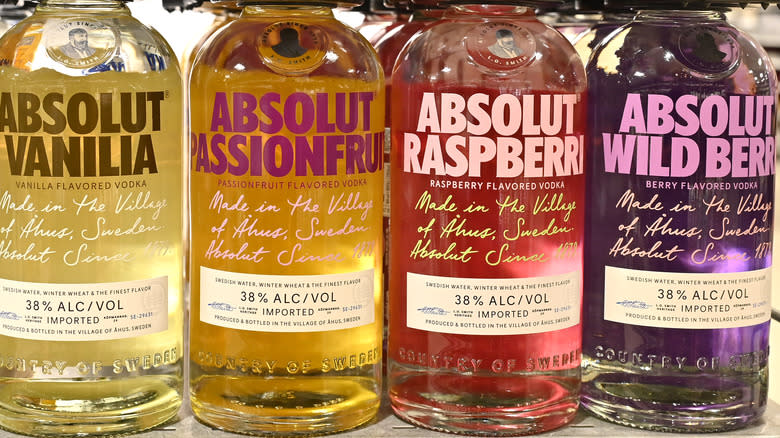
Flavored vodka has long been labeled as the infamous variety that should be avoided at all costs. Once recognized by the vibrant liquid and colorful, kitschy labels that usually hid a foul-tasting, sugary drink that had nothing to do with pure, high-quality spirits, things have changed. Nowadays, it seems the market includes many flavored vodkas worth exploring.
Gibson and Van Deventer agree there are some well-crafted options. "Flavored vodka can be great, as long as the taste isn't hidden behind a lot of sugar," claims Gibson. He's a fan of Ketel One infused with botanicals and the new Double Espresso and Huckleberry from Blue Ice. Van Deventer emphasizes that the quality of flavored spirit will be determined by the quality of the add-ins. "I like Absolut Citron, Ketel One Cucumber and Mint, and Finlandia Cranberry," she says.
Avoid labels with suspiciously vibrant-looking liquids. This is usually not a good sign, and these varieties are most likely packed with sugar, artificial flavorings and aromas, and coloring agents, resulting in a cloying drink that is not pleasant to drink neat or in cocktails. Karras generally avoids these bottles and notes, "I would recommend finding a mixer, syrup, or bitters and add flavors yourself."
Try Making Infused Vodka At Home
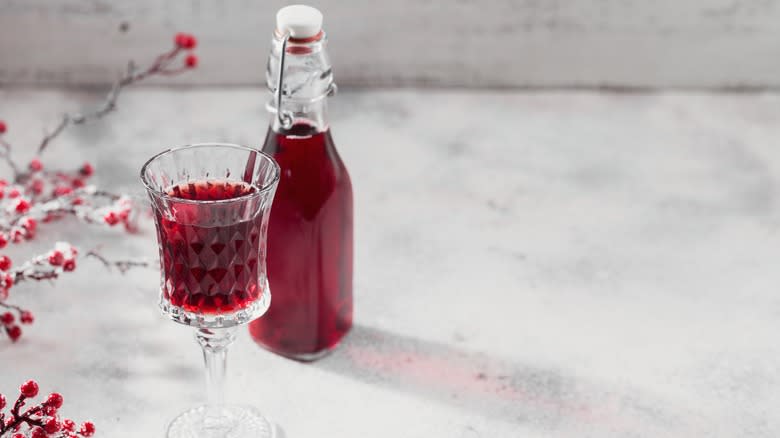
Though flavored vodka has become a standard these days, if you can't find one you like then consider making creative home infusions. Van Deventer is a fan and says, "try adding berries, spices, herbs, or even sweets to your vodka and see what works." You can opt for a single flavor, or if you feel confident enough, try pairing different but complementary flavors in the same batch.
Everyone can make these infusions at home. First, you'll need the base spirit for your infusion; you don't have to go with the most expensive bottle, but it's best to go with high-quality varieties, as the base will dictate the quality of the final product. Of course, make sure to use unflavored vodka without any additions. The infusion is best assembled in wide-rim jars so you can easily add the ingredients. If you plan to use fruit or veggies, clean them well beforehand. Then, just add the ingredients to the jar, close the lid, and wait for the liquor to soak up all the flavors.
The recommended infusion period is three to five days, but it's best to taste and check. When the time is up, strain the spirit and your infusion is ready. You can drink these infusions neat or play with different garnishes to make creative cocktails and mixed drinks.
Read the original article on Mashed.

